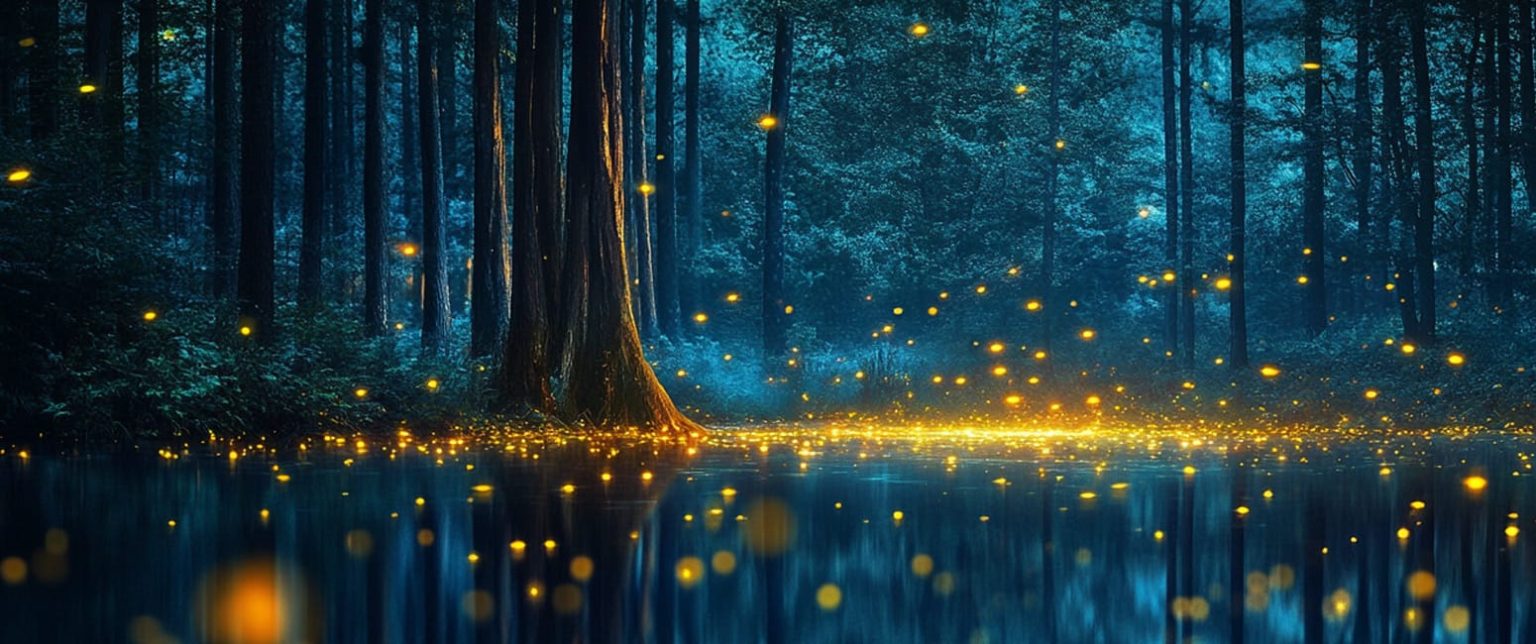Fireflies glow thanks to a chemical process known as bioluminescence. This takes place in a special organ in their abdomen, where a reaction occurs between a substance called luciferin, an enzyme called luciferase, oxygen, and energy molecules (ATP). The outcome is what scientists call “cold light” — light that shines without giving off heat.
But the glow isn’t just for show. Fireflies use their light for different reasons: to communicate, to attract a mate, and even to keep predators at bay. That sparkle can work as a warning signal, hinting that they’re either unappetising or even toxic. What’s truly remarkable is that each species has its own light pattern, a kind of luminous language that allows them to recognise one another. 💡✨
It’s no surprise that this glowing dance has fascinated people for centuries.
Why do fireflies shine?
The light you see is the result of a chemical reaction inside their bodies. This reaction, bioluminescence, brings together several substances and enzymes that work in perfect coordination to produce light.
The main ingredients of this natural light show are:
- Luciferin: a molecule that acts as the bioluminescent pigment, releasing light when it oxidises.
- Luciferase: an enzyme that speeds up the oxidation of luciferin.
- Oxygen: the essential element that triggers the glow.
How does it work?
- Light production: In specialised abdominal organs, luciferin combines with oxygen in the presence of luciferase.
- Chemical reaction: This process generates energy in the form of light, with almost no heat.
- Light control: Fireflies can switch their glow on and off, adjust its intensity, and even create unique flashing patterns.
Why do they do it?
Bioluminescence serves several purposes in fireflies:
- Hunting: A few species even use light as a trap, luring prey with their deceptive glow.
- Camouflage: In some species, the glow blends with the night sky, making them less visible to predators.
- Communication: Distinct flashing patterns help them attract mates, recognise their own kind, and signal warnings.
